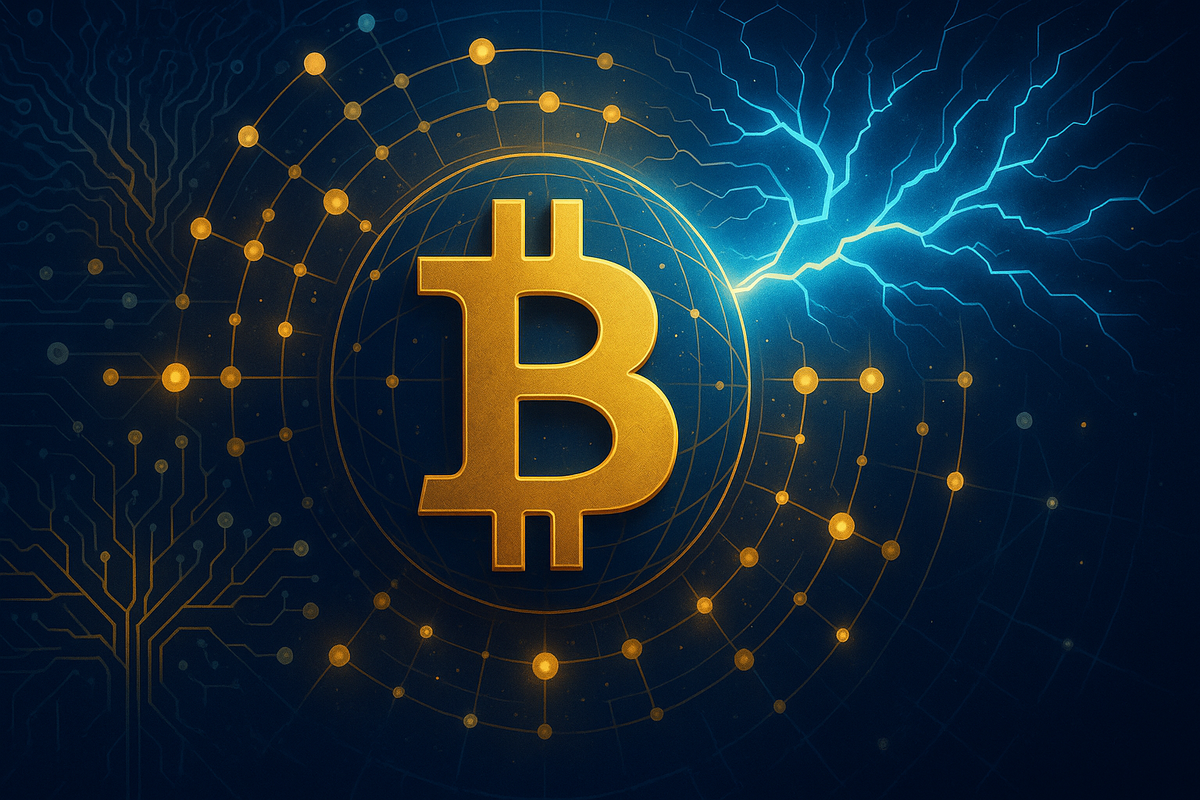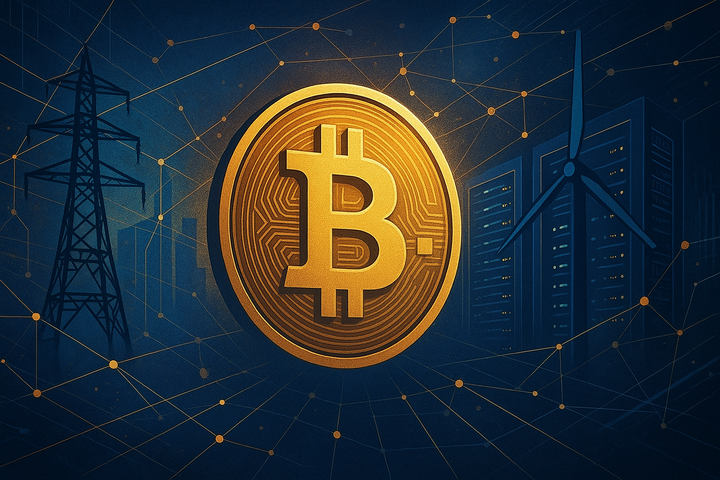AI Agents, Lightning, and Native Bitcoin Settlement
The September 23, 2025 episode of the Mr. M Podcast features Roy Sheinfeld explaining why Lightning qualifies as a Bitcoin Layer 2 and how it anchors activity to the base layer.

- My 'briefing notes' summarize the content of podcast episodes; they do not reflect my own views.
- They contain (1) a summary of podcast content, (2) potential information gaps, and (3) some speculative views on wider Bitcoin implications.
- Pay attention to broadcast dates (I often summarize older episodes)
- Some episodes I summarize may be sponsored: don't trust, verify, if the information you are looking for is to be used for decision-making.
Summary
The September 23, 2025 episode of the Mr. M Podcast features Roy Sheinfeld explaining why Lightning qualifies as a Bitcoin Layer 2 and how it anchors activity to the base layer. He argues that channel operations sustain fee markets while app integrations and AI agents create persistent demand for native settlement. The discussion highlights regulatory pushback, stablecoin conflicts, and the prospect that rising utility compresses volatility and weakens four-year cycles.
Take-Home Messages
- Lightning as Layer 2: Channel opens/closes on-chain with off-chain updates preserve finality while scaling throughput.
- Fee Market Resilience: Channel management and rebalancing maintain on-chain demand and miner revenues.
- App-Led Adoption: Embedding Bitcoin payments in mainstream platforms drives day-to-day usage.
- AI Micro-Settlement: Autonomous agents require permissionless money for reliable machine-to-machine payments.
- Policy Friction Ahead: Incumbents and regulators may restrict open settlement as it gains share, even as utility dampens volatility.
Overview
Roy Sheinfeld defines Lightning as a Bitcoin Layer 2 because channels open and close on-chain while interim balance updates stay off-chain until settlement. He emphasizes that routing achieves instant payments without sacrificing base-layer assurances. This construction, he argues, scales payment volume while retaining Bitcoin’s finality.
He contends Lightning complements miners by generating on-chain demand through channel lifecycle events. He frames fee sustainability as a function of aggregate channel activity and rebalancing. This counters claims that off-chain payments necessarily starve miners.
The conversation broadens “medium of exchange” beyond merchant checkout to include remittances and trading flows. Sheinfeld expects adoption to accelerate when developers embed native payments inside consumer apps. He identifies developer tooling and SDK reliability as leverage points.
AI agents appear as a structural demand source that needs open, programmable settlement. He contrasts permissionless Bitcoin with closed platforms and fiat replicas that can freeze transfers. He anticipates regulatory pushback as open payments challenge walled gardens, while greater utility compresses volatility and weakens cycle amplitude.
Stakeholder Perspectives
- Miners: Favor Lightning growth if channel operations and rebalancing sustain fee revenue.
- Wallet/Node Developers: Prioritize routing reliability, liquidity tools, and SDKs that cut integration time.
- App Platforms: Weigh user growth from open payments against the economics of closed ecosystems.
- Regulators: Evaluate systemic risks of permissionless settlement and contemplate targeted restrictions.
- Institutional Investors: Track whether utility-driven flows reduce realized volatility and reshape risk models.
Implications and Future Outlook
If developer friction falls, mainstream apps can route payments over Lightning while channel management anchors activity to the base layer. That pairing could strengthen fee markets even as users experience instant settlement. The key constraint is policy: restrictions could slow integration and push users toward more censorship-resistant tooling.
AI-to-AI and machine-to-human payments would normalize continuous micro-settlements. Networks that deliver finality, predictable costs, and robust liquidity would capture this flow, positioning Bitcoin and Lightning as default rails. As real usage scales, volatility may compress and familiar four-year patterns may attenuate.
Stable fee markets would enable longer-term planning for mining, grid participation, and energy procurement. Jurisdictions that support open settlement could attract infrastructure investment and technical talent. Conversely, restrictive regimes risk driving innovation offshore while failing to prevent permissionless usage.
Some Key Information Gaps
- What empirical thresholds of channel activity sustain miner fee markets alongside Lightning growth? Quantifying these levels is essential for assessing network security and long-term miner incentives.
- What developer experience improvements most effectively drive Bitcoin integration into mainstream apps? Identifying the highest-leverage SDK, API, and tooling fixes accelerates adoption at lowest cost.
- What protocol patterns enable AI agents to custody, budget, and settle safely on Bitcoin without human intervention? Standardized patterns would reduce operational risk and enable scalable machine commerce.
- Which regulatory triggers historically precede bans or severe restrictions on open monetary networks? Early-warning indicators can guide mitigation strategies and industry engagement.
- What evidence best links increases in real-world usage to measurable declines in price volatility? Robust metrics support institutional risk models and public communication.
Broader Implications for Bitcoin
Machine Economies at Scale
As AI agents proliferate, continuous micro-payments will blur lines between data exchange and value transfer. Bitcoin settlement with Lightning as Layer 2 offers a neutral rail for autonomous systems to transact without platform mediation. This dynamic could reorganize digital markets around machine-priced services, from APIs to energy and bandwidth.
Platform Power vs Open Payments
If open payments become default, platform lock-in from captive payment stacks weakens. App ecosystems may shift toward interoperability where value moves across services without gatekeeper tolls. Competitive pressure could push large platforms to offer opt-in Lightning rails or risk user and developer attrition.
Fee Markets and Energy Planning
Sustained channel activity that supports miner fees would strengthen the long-run economics of hashpower. Stable fee markets improve planning for energy procurement, grid participation, and demand response by miners. Regions with flexible generation and favorable policy could gain comparative advantage in hosting secure settlement.
Financial Stability and Policy Design
Permissionless settlement alters cross-border flows and reduces frictions in remittances and trade. Supervisors may pivot from entity-based controls to flow- and endpoint-based risk tools tailored to open networks. Jurisdictions that adapt early can capture fintech investment while preserving market integrity.
Data Governance for Autonomous Agents
Agent-driven payments raise questions about key management, budget limits, and auditability. Standardized controls atop Lightning could provide verifiable spend policies without reintroducing platform control. Transparent, on-device policy engines would align safety with the benefits of autonomous settlement.



Comments ()